The Good Shepherd Mosaic at Aquileia Basilica
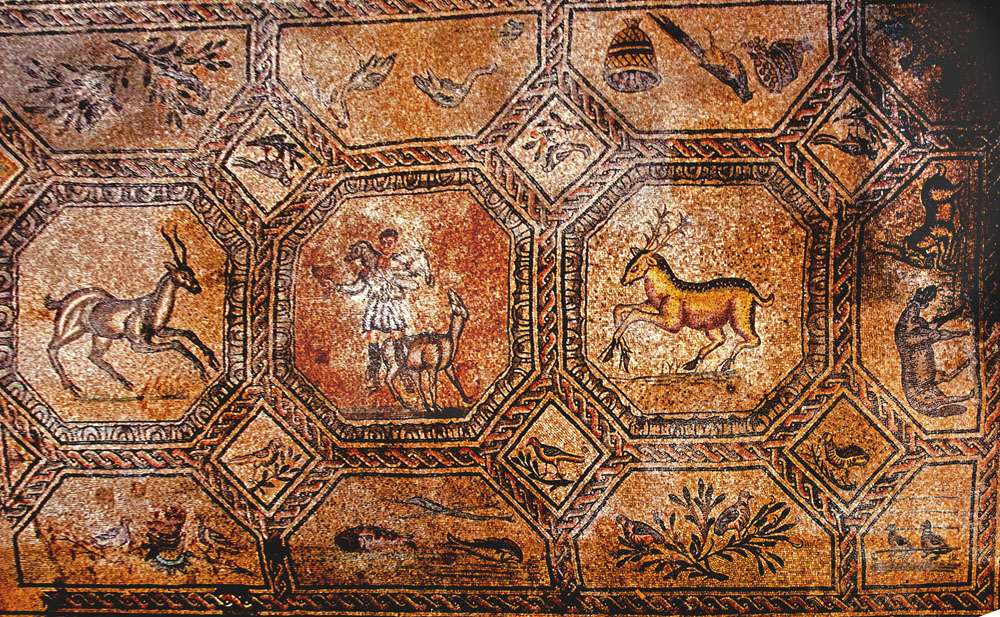
Late 4th century
Aquileia, Italy
The central image here represents what a person in 4th-century Roman culture would imagine a shepherd looks like, based on the art and poetry of the age (and perhaps the reality). Like this one, shepherds in classical poetry play on pan pipes, and Hermes is often represented as a shepherd with a sheep on his shoulders. Thus the image is not a picture of Christ, who is not directly portrayed anywhere in this vast mosaic, but a symbol of Christ, who in the gospels calls himself a shepherd and relates the parable of the shepherd who leaves the ninety and nine to bring home the one who is lost.
The mosaic also presses into service the iconography of Orpheus, who in classical art is typically surrounded by animals charmed by his music — as, symbolically, Christ's people flock to him for his good news. The most prominent of the animals are the two stags on left and right. Like
the stags in the Mausoleum of Galla Placidia and in the contemporary
Lateran Basilica,
they illustrate Psalm 42:1: "As the hart that panteth after the fountains of water, so my soul panteth after thee, O God."
For the birds and basket in the lower left corner, see this page.
View this image in
full resolution
View of the entire right side of the floor
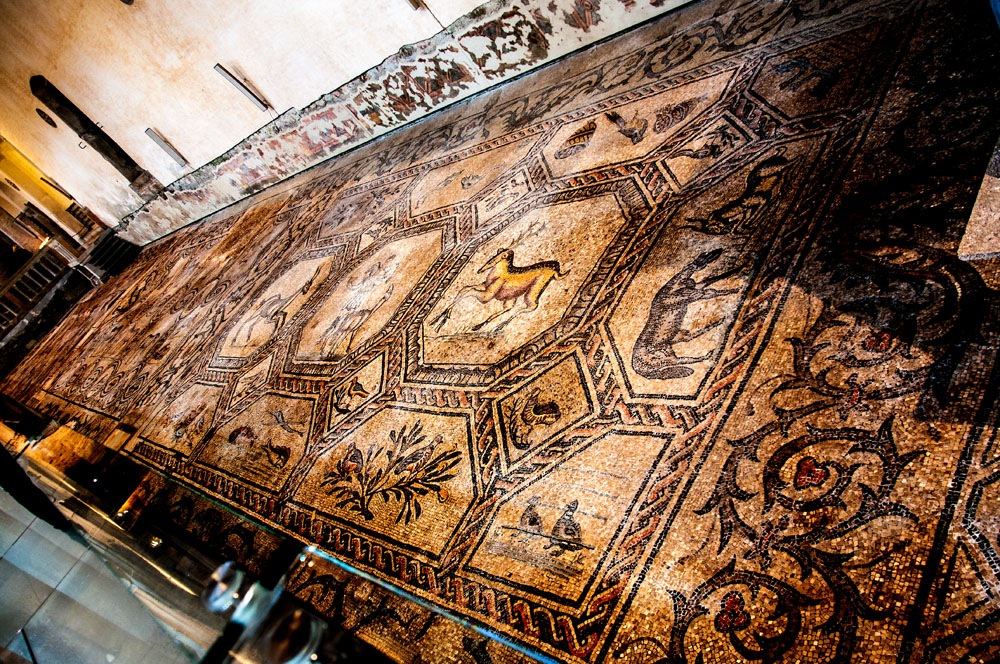
Detail of the central Good Shepherd panel :
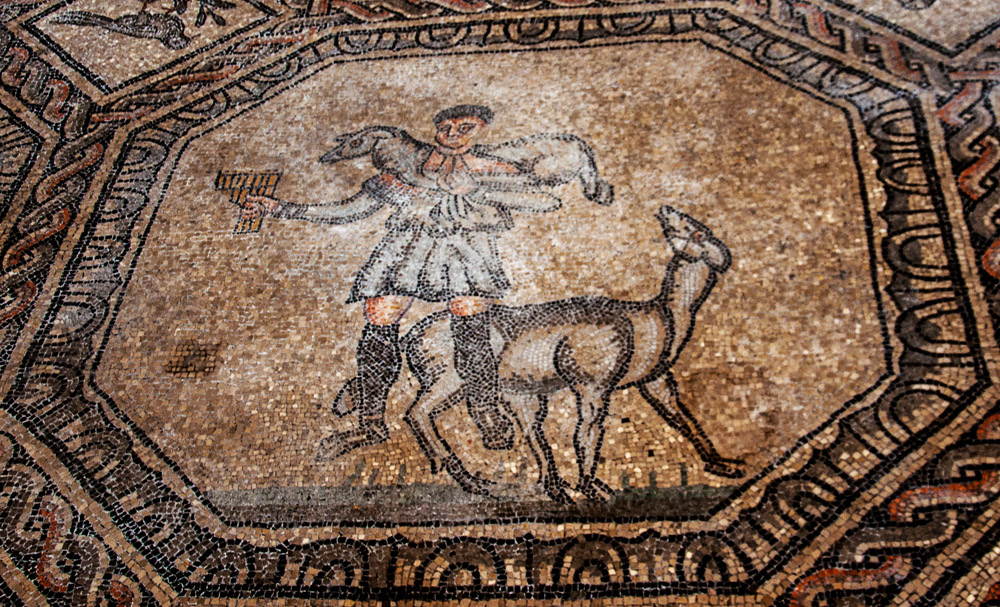
Detail of the approach of the stags:

Detail of the fish below the stags (swordfish, eel, sea bass?):
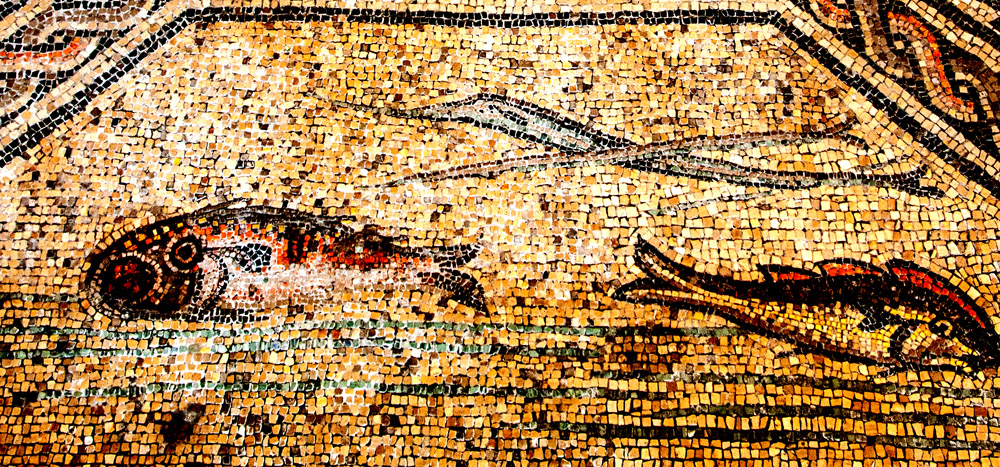
Detail of the birds below the right stag
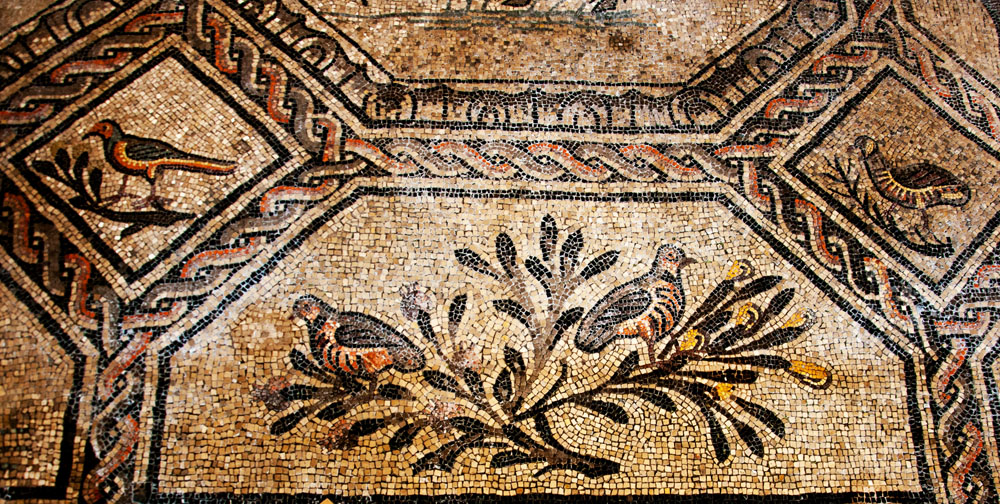
Read more about Christ as Shepherd.
Photographed at the basilica by Richard Stracke, shared under Attribution-NonCommercial-ShareAlike license.
1 Shepherds play pan flutes in Ovid's Metamorphoses (I, 677) and Tristia (IV, x) and in Titus Calpurnius Siculus's, Eclogues, IV, 147-151. For Hermes with the sheep see my page for Christ as Shepherd.
2 See Matthew 18:12, 25:32, 26:31, Luke 15:4, John 10:11-16.





